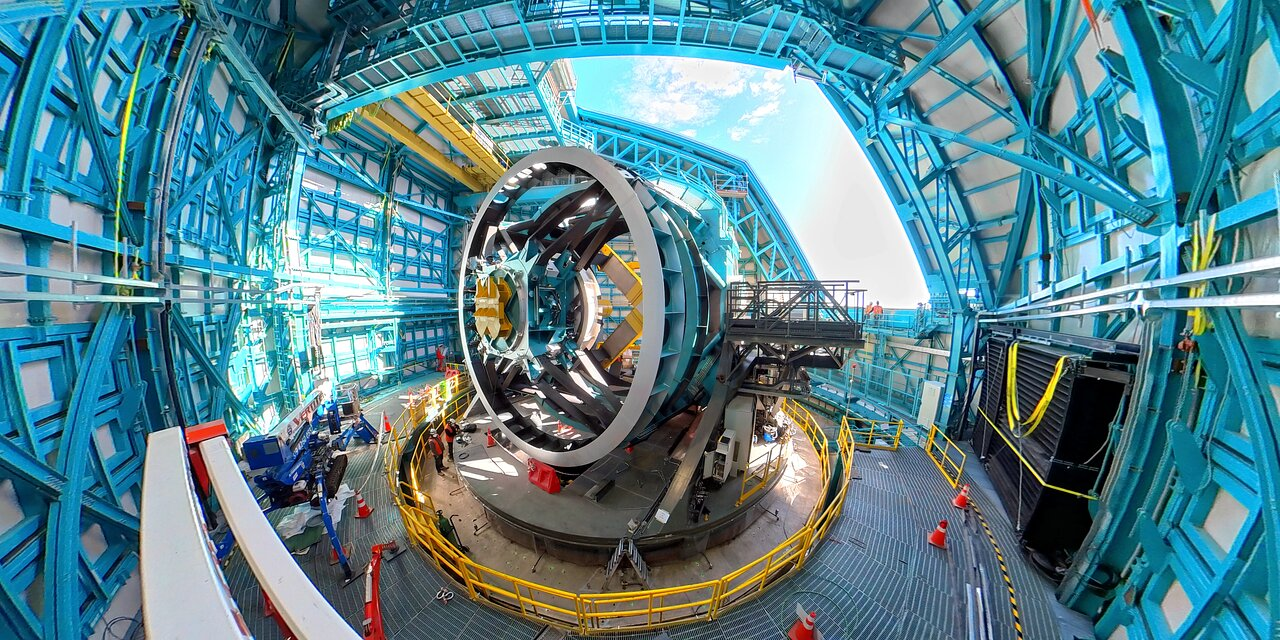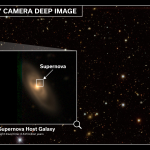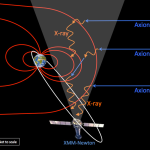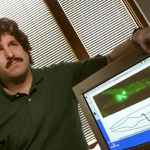The Vera C. Rubin Observatory is poised to revolutionize our understanding of the night sky and its mysteries. Situated in Chile and equipped with the powerful LSST Camera, this state-of-the-art observatory aims to capture breathtaking astronomical images while digging deep into the enigmas of dark matter and the structure of the Milky Way. Its innovative approaches will allow astronomers to not only map the cosmos but also track transient celestial phenomena over its extensive 10-year survey. By producing a comprehensive map of the universe, the Rubin Observatory will make groundbreaking discoveries accessible to the global scientific community, ensuring that researchers can delve into the realms of dark energy and other cosmic phenomena like never before. This exciting venture signifies a new era in astronomical research, paving the way for discoveries that could reshape our understanding of the universe itself.
The Rubin Observatory project represents a significant leap forward in astronomical research, focusing on the use of cutting-edge technology to explore celestial phenomena. With its immense LSST Camera set to capture expansive celestial imagery, this facility is expected to enhance our grasp of cosmic events and the elusive nature of dark matter. By systematically mapping the Milky Way and documenting changes in the night sky, researchers aim to yield a wealth of data, creating a detailed cosmic tapestry. The initiative not only emphasizes large-scale mapping and monitoring but also promotes open access to its findings, empowering scientists worldwide. As this ambitious project unfolds, it promises to unlock the secrets of the universe and challenge our perceptions of fundamental physics.
Overview of the Vera C. Rubin Observatory
The Vera C. Rubin Observatory is a groundbreaking astronomical facility based in Chile, designed to unravel the mysteries of the universe through a comprehensive mapping of the night sky. Launched as part of the Legacy Survey of Space and Time (LSST), this observatory aims to capture a panoramic view of the cosmos over a decade-long period, utilizing advanced imaging technology to provide insights into cosmic phenomena such as dark matter and dark energy. By leveraging its state-of-the-art infrastructure, the observatory is expected to serve as a cornerstone for astronomical research, benefitting scientists and educators alike.
At the heart of the Rubin Observatory’s mission is the LSST Camera, the most powerful astronomical camera ever constructed. Capable of generating high-resolution images, this camera allows for the detection of faint celestial objects and the examination of their characteristics in unprecedented detail. The integration of the LSST Camera with the observatory’s robust Simonyi Survey Telescope signifies a monumental leap in our capacity to explore the universe, aiming to illuminate aspects of the Milky Way and surrounding astronomical structures that were previously obscured.
The Significance of the LSST Camera
The LSST Camera represents a technological marvel, designed to capitalize on the virtues of large aperture telescopes while simultaneously maximizing the field of view. Capable of capturing images that are 21 times larger than traditional cameras, its advanced sensors provide researchers with the ability to document cosmic events in real-time over a decade-long observational program. This capability transforms our understanding of transient phenomena, allowing astronomers to detect moving objects, such as asteroids and supernovae, with remarkable accuracy.
Moreover, the LSST Camera’s profound depth of field and enhanced resolution equip scientists to delve deeper into the critical observation of dark matter and dark energy. The vast data sets generated will empower researchers to investigate the cosmic forces shaping our universe, addressing fundamental questions about matter distribution and the expansion of space. The collaborative model adopted by the Rubin Observatory ensures that this invaluable data will be shared across the global scientific community, fostering collective learning and discovery in the field of astronomy.
Mapping the Milky Way: A New Era of Discovery
The innovative mapping initiative at the Vera C. Rubin Observatory aims to create a detailed three-dimensional representation of the Milky Way galaxy. This mapping not only highlights known structures but also opens the door to discovering previously unnoticed features within our galactic neighborhood. By employing the LSST’s extensive array of data inputs, researchers can track the movement and composition of stars, gas, and dark matter in unprecedented depth, thereby enhancing our understanding of the galactic dynamics that govern our cosmic home.
As the observatory collects data night after night, the cumulative effect will be a transformative time-lapse image of the Milky Way, revealing changes in celestial objects and phenomena as they evolve. This longitudinal study enriches our comprehension of galaxy formation and the intricate dance of cosmic bodies, enabling scientists to hypothesize about the universe’s development over vast periods. The Rubin Observatory not only demystifies the Milky Way but contributes to a broader narrative of galactic evolution, illuminating the dark corners of our universe.
Unlocking the Secrets of Dark Matter and Dark Energy
One of the most ambitious goals of the Vera C. Rubin Observatory is to deepen our understanding of dark matter and dark energy, two of the universe’s most enigmatic components. Dark matter constitutes about 90% of the Milky Way’s mass, yet its precise nature remains elusive to scientists. Through the observatory’s advanced capabilities, researchers hope to shed light on this phenomenon by observing its gravitational effects on visible matter and radiation. The LSST Camera’s precision offers an avenue to discern patterns and anomalies that could lead to a breakthrough in understanding this mysterious substance.
Moreover, dark energy—thought to contribute to the accelerated expansion of the universe—poses another significant question that the observatory aims to tackle. By analyzing the gravitational implications of dark energy alongside the observations from the LSST, researchers can stimulate discussions and hypotheses surrounding its mechanics. The comprehensive data outputs from the Rubin Observatory are expected to provide clues that will help elucidate these cosmic enigmas, potentially transforming our fundamental knowledge of physics and the composition of the universe.
Public Engagement and Education Initiatives
The Vera C. Rubin Observatory stands distinguished not only for its astronomical contributions but also for its commitment to public engagement and education. As part of its broader mission, the observatory plans to make all data collected during the decade-long project accessible to scientists, educators, and the public alike. This openness follows a revolutionary model that encourages collaborative scientific inquiry and fosters a deeper appreciation for astronomy among K-12 students and the general community.
Through workshops, public lectures, and collaborative educational programs, the Rubin Observatory aims to inspire future generations of scientists and enthusiasts. The integration of real-time astronomical data into learning environments allows students to connect theoretical concepts with tangible observations, promoting a more profound understanding of cosmic phenomena. By democratizing access to information, the Rubin Observatory not only contributes to scientific progress but also cultivates a culture of curiosity and exploration across diverse populations.
Revolutionizing Astronomy with Advanced Technology
The integration of cutting-edge technology at the Vera C. Rubin Observatory marks a significant milestone in the evolution of astronomy. By harnessing sophisticated optical systems, powerful computational tools, and the LSST Camera’s capabilities, the observatory has redefined the standards for astronomical observation. This amalgamation of technology allows for the systematic collection of high-quality data, facilitating in-depth analyses of celestial events while propelling research on critical astrophysical questions.
Furthermore, collaborations with institutions and experts worldwide enhance the technological prowess of the Rubin Observatory. The shared knowledge and innovation foster a dynamic ecosystem where researchers can test hypotheses, validate findings, and refine observational strategies. This collaborative approach does not only advance specific projects but also strengthens the field of astronomy as a whole, indicating a future where technology and collaboration go hand in hand.
The Vision for the Future of Astronomy
Looking ahead, the Rubin Observatory is set to pave the way for a new era in astronomy characterized by expansive discoveries and rich datasets. As it embarks on a decade of exploration, its vision includes not only the pursuit of traditional astronomy but also interdisciplinary collaborations, venturing into fields such as data science, artificial intelligence, and educational outreach. The integration of diverse perspectives will enrich the discourse surrounding cosmic phenomena and impact various scientific domains.
With its ambitious goals, the observatory aims to reposition the narrative of astronomy, shifting from isolated studies to an open-source model that empowers a global community of inquisitive minds. As data becomes the lifeblood of research, the Rubin Observatory will continue to facilitate avenues for discovery, ensuring that the knowledge acquired serves as a foundation for future explorations in understanding our universe.
Global Collaboration for Astronomical Research
The Vera C. Rubin Observatory embodies the spirit of global collaboration, as its mission transcends borders to unite scientists and educators worldwide. Collaborative efforts include partnerships with various international institutions and educational organizations that aim to amplify the reach and impact of the research conducted at the observatory. By pooling resources and expertise, this collaboration enriches the observational outcomes and supports comprehensive data analysis, nurturing a robust scientific community.
In addition to fostering scientific progress, the observatory encourages cultural exchange through shared educational initiatives and outreach programs. By involving various countries in its mission, the Rubin Observatory not only advances astronomical research but also cultivates global interest in space science, empowering local communities to partake in the wonders of discovery. Such global engagement is essential for nurturing a broader understanding of astronomy and the multifaceted questions it seeks to address.
Astrophysical Research: Bridging Science and Society
The work being conducted at the Vera C. Rubin Observatory represents a critical intersection between astrophysical research and societal engagement. As the observatory delves into the enigmatic realms of dark matter and cosmic evolution, it simultaneously seeks to provoke thought and reflection on humanity’s place within the universe. Through its public offerings and educational resources, the observatory aims to facilitate discussions that extend beyond scientific inquiry, prompting broader societal reflections on the implications of cosmic discoveries.
Recognizing that science should serve a greater communal purpose, the Rubin Observatory’s mission includes addressing societal concerns related to space exploration and fundamental research. By engaging diverse audiences and fostering a dialogue around scientific discoveries, the observatory aims to create a greater appreciation for the cosmos, its mysteries, and the role of humanity within this grand tapestry. In doing so, it bridges the gap between empirical research and social relevance, inspiring future generations to explore, understand, and value our universe.
Frequently Asked Questions
What is the primary objective of the Vera C. Rubin Observatory?
The primary objective of the Vera C. Rubin Observatory is to conduct the Legacy Survey of Space and Time (LSST), which aims to create a comprehensive map of the universe by capturing on-sky images of the night sky over a 10-year period. This initiative will allow scientists to explore phenomena such as dark matter, map the structure of the Milky Way, and detect transient objects.
How does the LSST Camera enhance astronomical imaging at the Rubin Observatory?
The LSST Camera, the largest astronomical camera ever constructed, significantly enhances imaging capabilities at the Rubin Observatory by providing images that are 21 times larger than the engineering test camera currently in use. This allows for detailed cosmic cinematography, enabling astronomers to simultaneously observe many faint objects and phenomena across the night sky.
What role does dark matter play in the research conducted by the Rubin Observatory?
Dark matter is a crucial focus of research at the Rubin Observatory. Approximately 90% of the mass of the Milky Way is inferred to be dark matter, which influences the gravitational effects observed in the universe. By utilizing the advanced imaging and surveying tools of the LSST, scientists hope to better understand the properties and nature of dark matter and its role in cosmic structure.
When can we expect to see the first astronomical images from the Rubin Observatory?
The first public release of astronomical images from the Rubin Observatory is expected in mid-2025, following a commissioning period for the LSST Camera. This timeline allows for rigorous testing and preparation of the camera to ensure it meets the observatory’s high standards.
What are the educational outreach goals of the Vera C. Rubin Observatory?
The Vera C. Rubin Observatory aims to engage the community through educational outreach aimed at K-12 students and the broader scientific community. The observatory plans to make all its data available for education and research, thus fostering participation and collaboration across various institutions and countries.
How does the Rubin Observatory plan to address the study of dark energy?
The Rubin Observatory plans to address dark energy through its wide-field survey, which will continuously monitor the night sky for cosmic events. By capturing high-resolution images and enabling detailed analysis, the observatory aims to study the effects of dark energy, which is theorized to drive the accelerating expansion of the universe.
What innovations does the Rubin Observatory bring to the field of astronomy?
The Rubin Observatory introduces several innovations, including the ability to conduct wide-field astrophysical surveys with unparalleled resolution. By merging the capabilities of large-aperture and wide-field telescopes, it allows for efficient data collection on transient astronomical events, ultimately transforming how scientists study the cosmos.
Why is the Vera C. Rubin Observatory significant for Milky Way mapping?
The Vera C. Rubin Observatory is significant for Milky Way mapping as it will capture continuous, high-quality images of our galaxy over a decade. This extensive dataset will help astronomers decipher the structure and formation of the Milky Way, uncovering complex dynamics and the influence of dark matter within it.
What is the current status of the construction of the LSST Camera at the Rubin Observatory?
As of now, the LSST Camera is in the final stages of preparation for installation at the Vera C. Rubin Observatory. After extensive testing with the current engineering camera, the team is gearing up for the camera’s integration, aiming to have it operational by the end of January, followed by a six-month commissioning phase.
How will data from the Rubin Observatory contribute to scientific research?
Data from the Rubin Observatory will significantly contribute to scientific research by providing a wealth of astronomical images and information that will be made openly accessible to the global scientific community. This openness fosters collaboration and innovation, enabling a wide range of studies from mapping dark matter to identifying new celestial phenomena.
| Key Points |
|---|
| The Rubin Observatory’s Simonyi Survey Telescope captures first images of the night sky with a test camera. |
| The Legacy Survey of Space and Time project aims to create a comprehensive map of the universe over a 10-year period. |
| The main LSST Camera will be larger than the test camera, capturing images 21 times bigger. |
| The telescope will scan the sky every few nights, looking for changes and cosmic movements. |
| All data will be made available to the scientific community and for educational outreach. |
| The project also aims to investigate dark matter and dark energy with unprecedented precision. |
Summary
The Rubin Observatory is pioneering astronomical research with its groundbreaking Legacy Survey of Space and Time project. By using advanced technologies, including the powerful LSST Camera, it seeks to map the universe in unprecedented detail while prioritizing open data availability for global scientific cooperation. Through continuous observation of the night sky, it aims to uncover crucial insights into dark matter and dark energy, expanding our understanding of the cosmos and providing rich educational resources for future generations.








